Refinements
07/10/2024. Some apparent, some not... By way of background, this is the first post in several years that does not rely on one server for the post and another for the photos. After fifteen years with Alpha Omega Hosting (great customer support) and several with Hostgator, I'm doing my best to turn over all hosting to Hostinger. What can I say? I got a deal.
The more apparent refinement is in the following full-disk mosaic. It's still made up of 12 panels, but the clips are only 200 frames long, and each panel uses just the 51 best frames. That saves a total of four minutes for the full-disk acquisition (which matters when sungazing between the clouds and also contributes to uniformity). I'll stop carping about the the field of view being slightly too small because I can still (just) take a good flat by centering on the Sun and defocusing. That greatly simplifies flatfielding. The short clips save even more time at the computer. The finished image does not seem in any way inferior for these shorter clips.
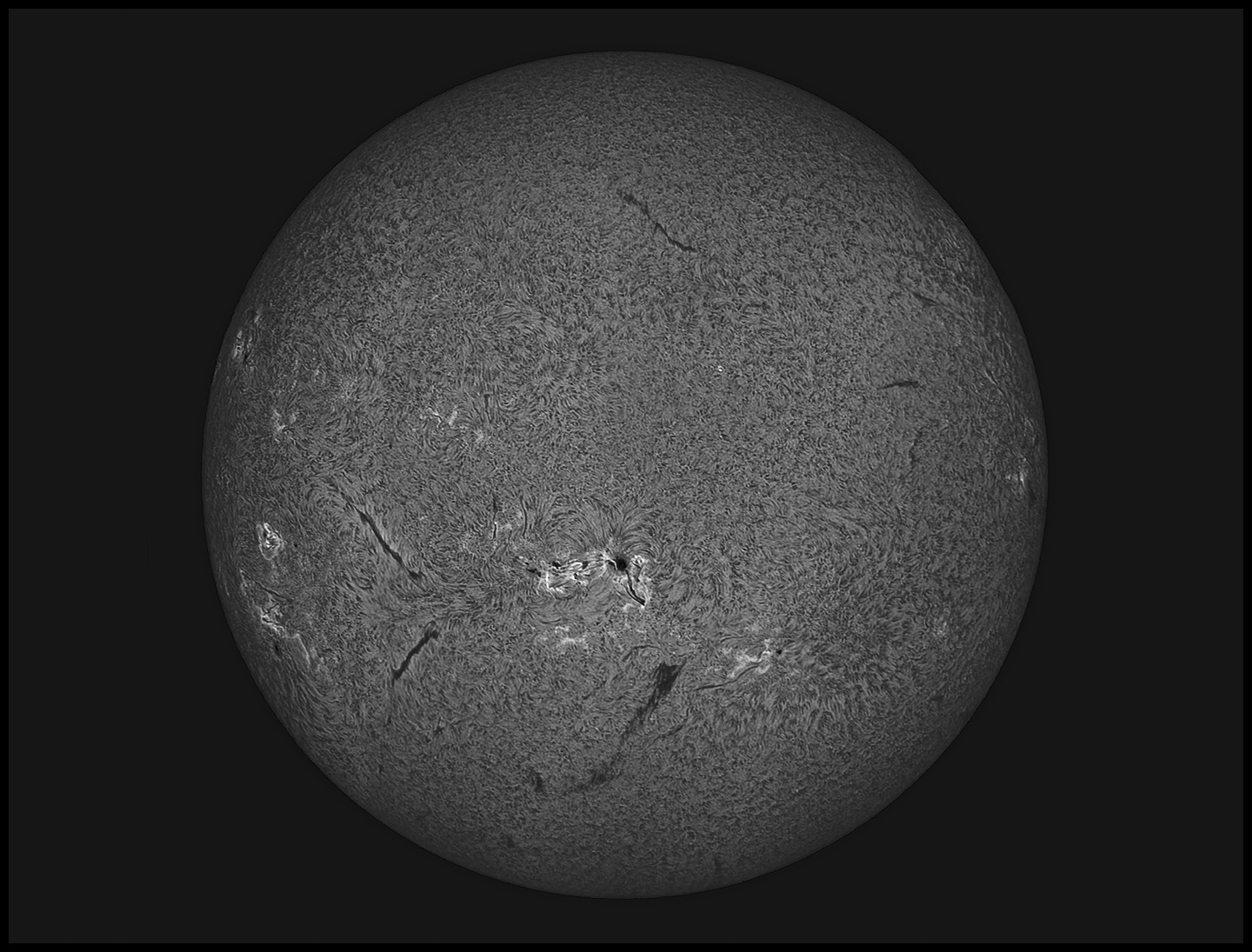
internal compressor w/20mm extension. Gamma 41, full-frame captures.
Click it and it won't seem nearly so dark.
As usual, you can click any image on
this page for a better view.
Any time I didn't spend on the mosaics, I spent on that front-and-center active region. Image orientations change haphazardly as I tried different imaging trains (compressors, extension tubes) and rotated the camera to suit.
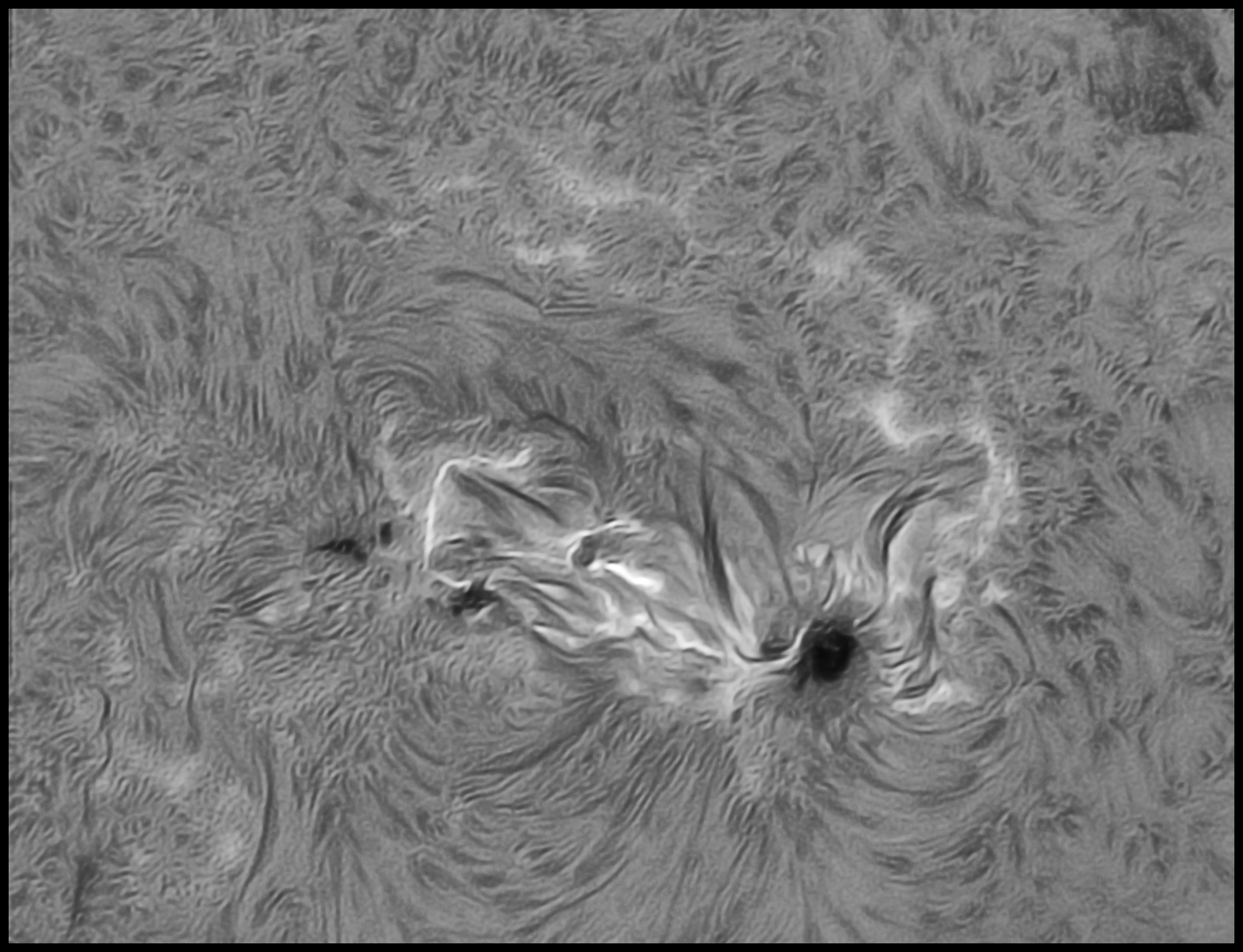
Best 100 of 3,000 frames. High gain (376), moderate gamma (40), 14-bit,
0.97ms exposures, 40fps, no compressor, ROI about 850x650.
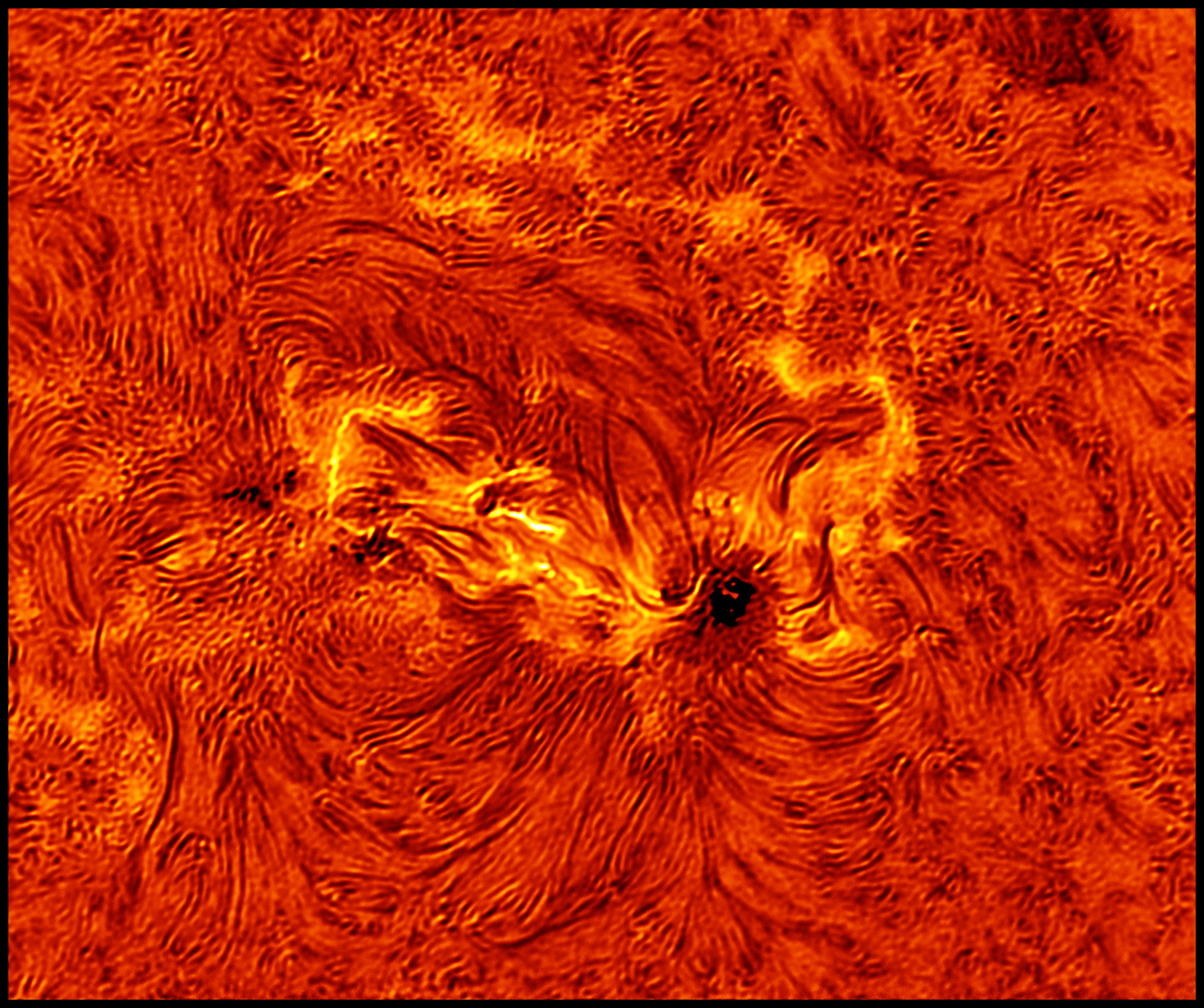
Best 1,500 of 10,000. Experiments with High-Pass filtration and
assorted blending modes to keep fine filaments fine.
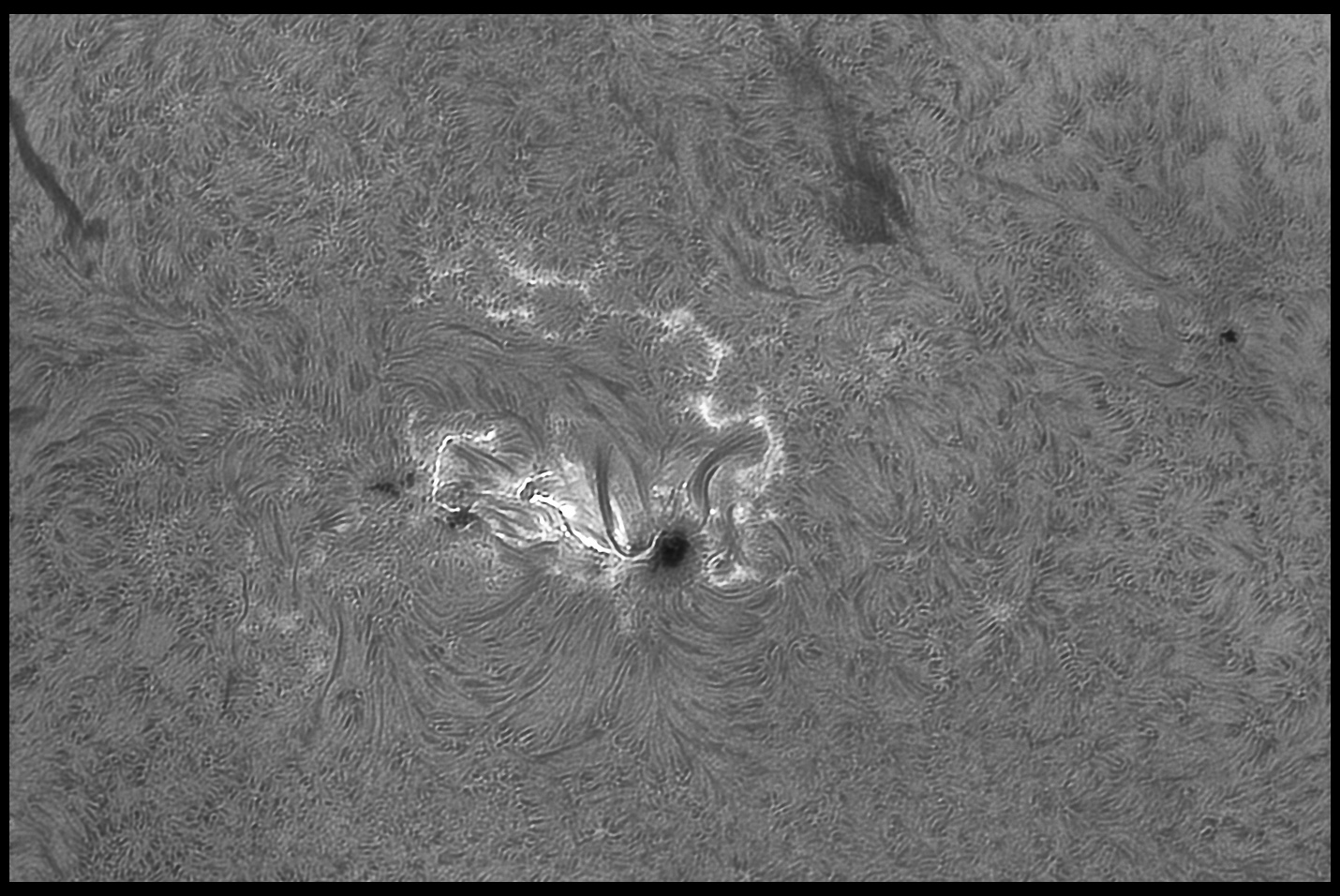
Best 100 of 500, 2ms, gain 297, etc etc. Antares internal compressor, no extension.
07/11/2024. I finally tried to capture an entire sequence of the Daystar Quark coming on band. We'll see how well or poorly that turns into an animation. I executed another 12-panel full-disk mosaic comprised of 200-frame clips because practice can't hurt. Some routine deep stacks at native EFL followed and then I went nuts and put a barlow on the end of a snout and tried some seriously oversampled images. I probably did something at the usual slightly compressed scales, too (but there was a lot of try this and try that and you'd think I'd remember to take notes, but I almost never do). If anything worked, it's down below.
About the "routine" 12x mosaic: for some reason, AS!4 decided not to play, freezing during batch runs early on the first frame. A rock solid AS!3, however worked like a champ. I used the best 49 out of short, 200-frame clips, modest gamma, drizzled 3x, sharpened, and downsampled (etc), for this:
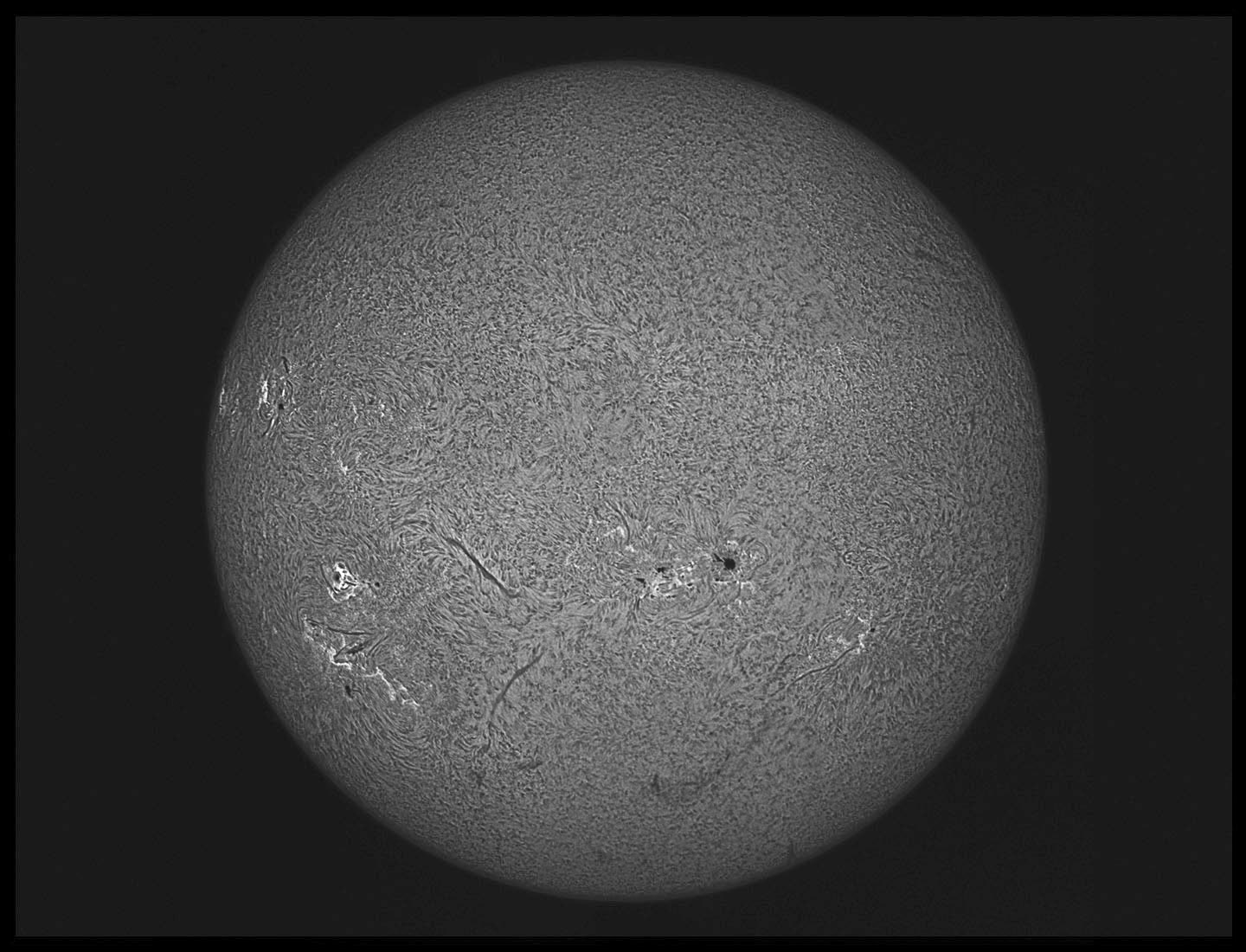
A deep stack (best 1200 out of 4000) using the snout with the internal compressor:

A two-panel view (top/bottom) made at obscene image scale, with a barlow on the end of a snout. Best 200 of 2,000, times two. I also tried this with 20mm of additional extension, but even I thought that was a bit silly.

I've aligned the series of photos showing the filter coming on band, put them in a smart object, and sharpened the lot. But I've yet to figure out how to turn them into a decent animation. Some fine day.
:: top ::